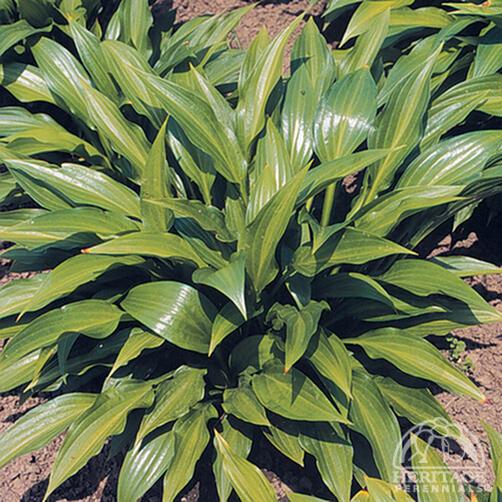Hosta lancifolia
Plant number: 1.277.130Hosta are among the most popular of perennials for shady areas, with literally hundreds of varieties now readily available. Plants form a sturdy mound of foliage, topped with lily-like blooms. This common variety forms a mid-sized, dense mound of arching medium green, lance-shaped leaves and thrives in almost any growing condition. Lavender flowers appear in late summer. It is thought to be native to China but its true origin is unknown. Although some sources may claim it was the first Hosta ever grown in North America, it is still considered by others to be a workhorse for the shade garden due to its fast growth rate, excellent mounding habit and good late season show of flowers. Hosta go completely dormant in the fall, and the dying foliage can be removed any time before mid spring. Easily divided in either spring or fall, but plants may be left alone for years. While deer enjoy eating Hosta, this variety may be slightly less palatable to deer than others. Further details for |
| All 302 results here | Alphabetical list of all 4,000+ perennials here |
Hosta lancifolia
Plant number: 1.277.130Hosta are among the most popular of perennials for shady areas, with literally hundreds of varieties now readily available. Plants form a sturdy mound of foliage, topped with lily-like blooms. This common variety forms a mid-sized, dense mound of arching medium green, lance-shaped leaves and thrives in almost any growing condition. Lavender flowers appear in late summer. It is thought to be native to China but its true origin is unknown. Although some sources may claim it was the first Hosta ever grown in North America, it is still considered by others to be a workhorse for the shade garden due to its fast growth rate, excellent mounding habit and good late season show of flowers. Hosta go completely dormant in the fall, and the dying foliage can be removed any time before mid spring. Easily divided in either spring or fall, but plants may be left alone for years. While deer enjoy eating Hosta, this variety may be slightly less palatable to deer than others. Further details for |






